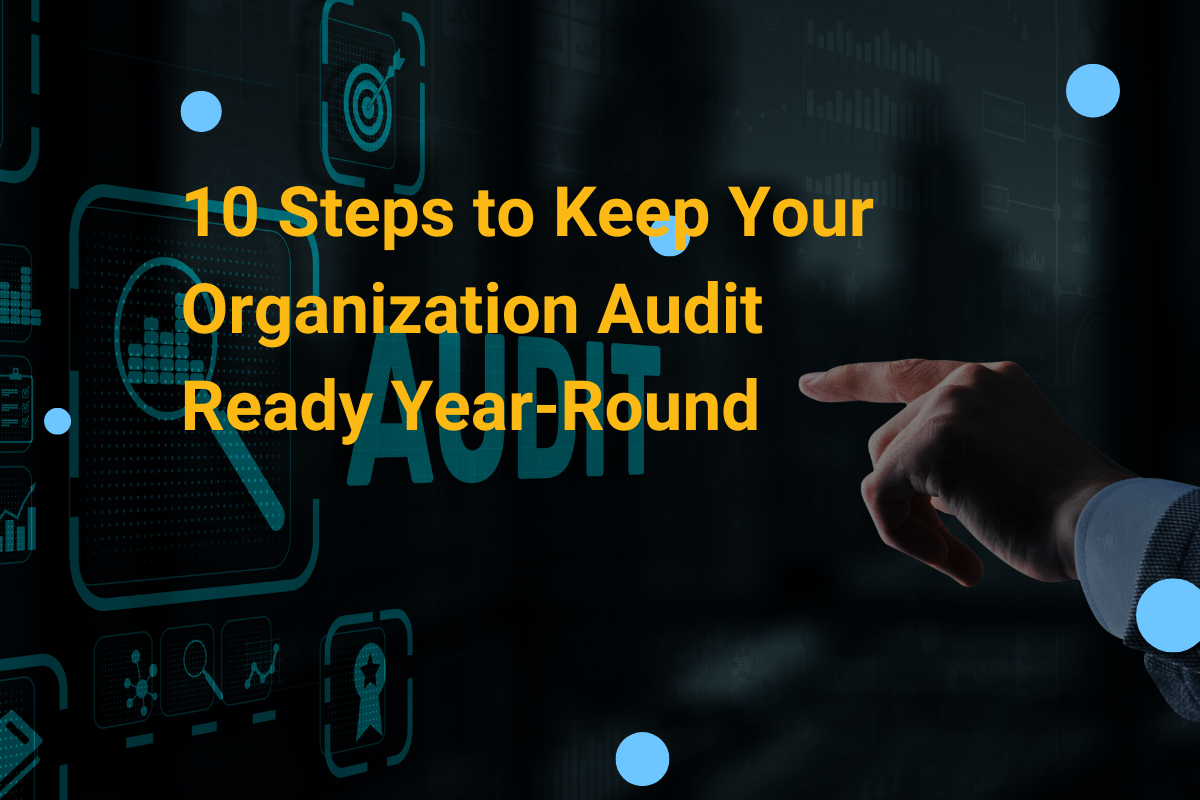Being audit ready is essential for any organization that wants to maintain compliance, protect sensitive data, and build trust with clients, partners, and regulators. Audit readiness ensures your organization meets the highest standards of security, governance, and operational efficiency, while avoiding costly penalties or disruptions during audits.
Here’s a step-by-step guide to keeping your organization audit ready all year long.
1. Understand Relevant Compliance Frameworks
To stay audit ready, you first need to identify which compliance frameworks apply to your organization. Common standards include:
SOC 2 Type II – Focused on security, availability, processing integrity, confidentiality, and privacy.
ISO 27001 – Provides a framework for managing information security risks.
HIPAA – Critical for organizations handling healthcare data.
GDPR & CCPA – For organizations managing personal data from EU or California residents.
Understanding the requirements ensures your controls align with regulatory expectations.
2. Document All Policies and Procedures
Auditors expect clear and up-to-date documentation. Maintain a repository of:
Security policies and procedures
Access control policies
Data retention and backup protocols
Incident response plans
Well-documented processes demonstrate accountability and simplify the audit process.
3. Implement Strong Identity and Access Management (IAM)
Access control is a cornerstone of being audit ready. Ensure that:
Each user has only the permissions they need (principle of least privilege)
Multi-factor authentication (MFA) is enforced
Privileged accounts are monitored and regularly reviewed
Proper IAM reduces security risks and supports compliance requirements.
4. Monitor Systems Continuously
Continuous monitoring helps your organization remain secure and audit ready at all times. This includes:
Real-time security monitoring
Logging and tracking of critical events
Alerts for unusual activity or misconfigurations
Monitoring provides evidence for auditors and helps catch issues early.
5. Automate Compliance Where Possible
Automation helps maintain audit readiness without overloading your team. Consider:
Automated logging and reporting tools
Compliance dashboards for regulatory frameworks
Scheduled checks for misconfigurations and vulnerabilities
Automation reduces human error and streamlines the audit process.
6. Review Vendor and Third-Party Risks
Your organization is only as secure as its partners. Maintain audit readiness by:
Evaluating vendor compliance regularly
Reviewing contracts for security and compliance clauses
Ensuring third-party services meet your standards
Auditors look for evidence that third-party risks are actively managed.
7. Conduct Internal Audits and Risk Assessments
Internal audits help you identify gaps before an external audit. Implement:
Quarterly risk assessments
Mock audits simulating real audit conditions
Remediation plans for discovered issues
Proactive auditing keeps your organization audit ready year-round.
8. Train Your Team Consistently
Compliance is as much about people as technology. Keep your team prepared by:
Conducting regular compliance and security training
Updating staff on new regulations and internal policies
Encouraging a culture of security awareness
A trained team reduces human errors, a leading cause of audit failures.
9. Maintain Comprehensive Backup and Recovery Plans
Auditors expect evidence that your organization can recover from data loss or incidents. Ensure:
Regular backups of critical data
Tested disaster recovery plans
Documentation of recovery procedures and timelines
This supports both compliance and operational resilience.
10. Continuously Improve Audit Readiness
Compliance is not static. To remain audit ready:
Regularly review and update controls
Integrate lessons learned from incidents or audits
Keep up with evolving industry standards and regulations
Continuous improvement ensures your organization stays secure, efficient, and audit ready.
Conclusion
Being audit ready is essential for organizations that want to protect their clients, safeguard sensitive data, and demonstrate trustworthiness. By following these 10 steps—understanding compliance frameworks, automating processes, monitoring continuously, and fostering a culture of security—you can ensure audits go smoothly and efficiently.
Want to keep your organization audit ready year-round? Visit our Compliance Page to explore solutions tailored for your business.
Ready for a Better IT Experience?

